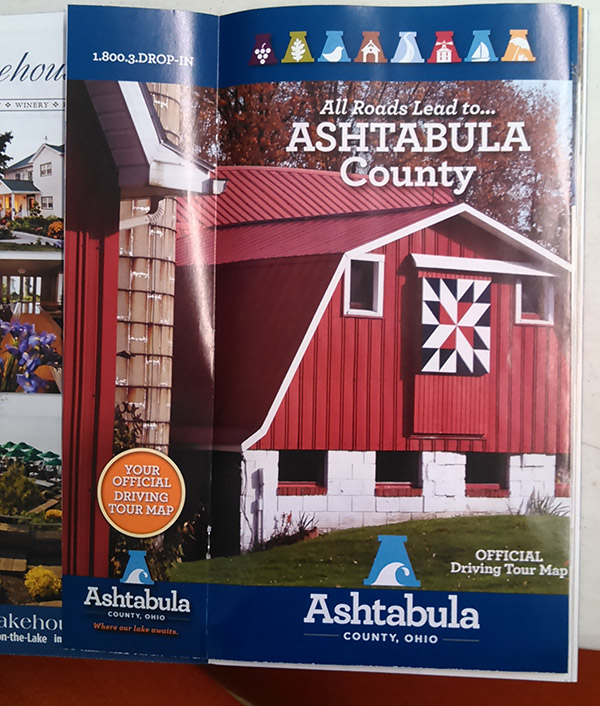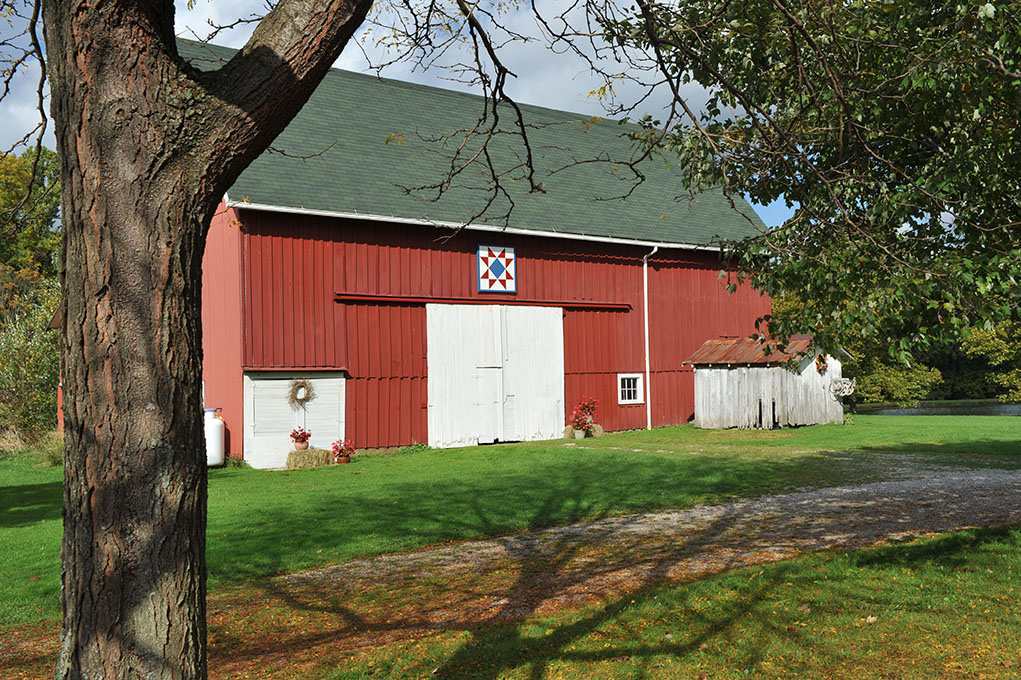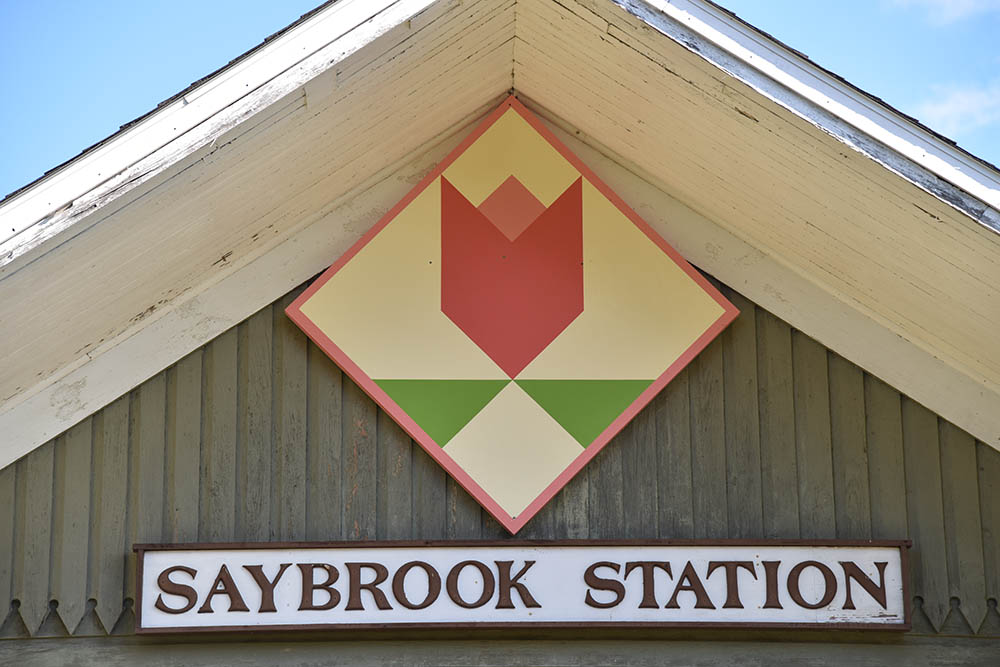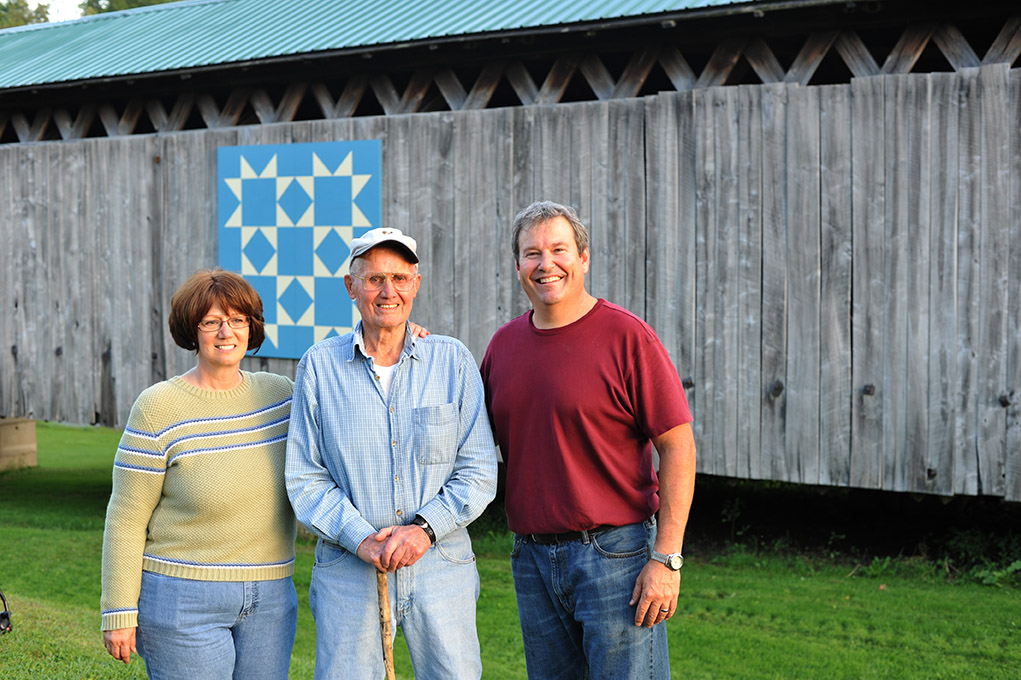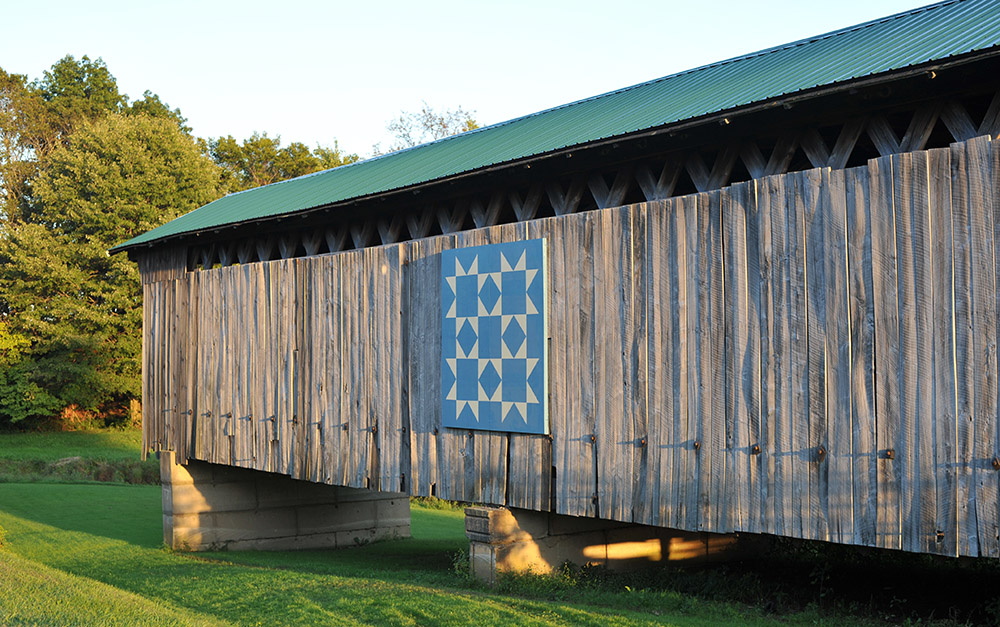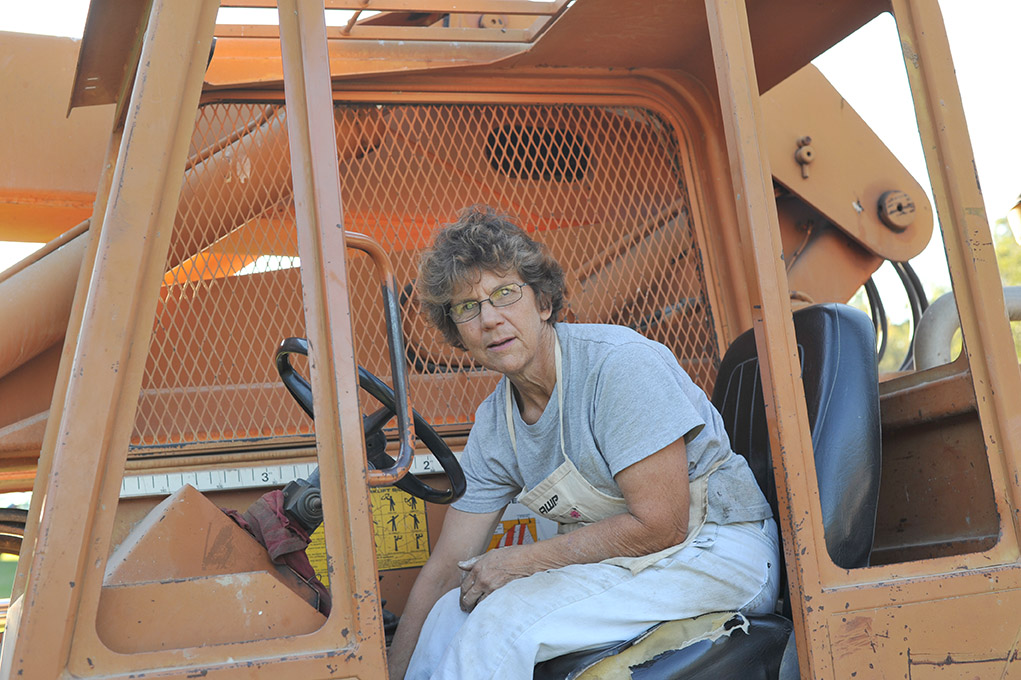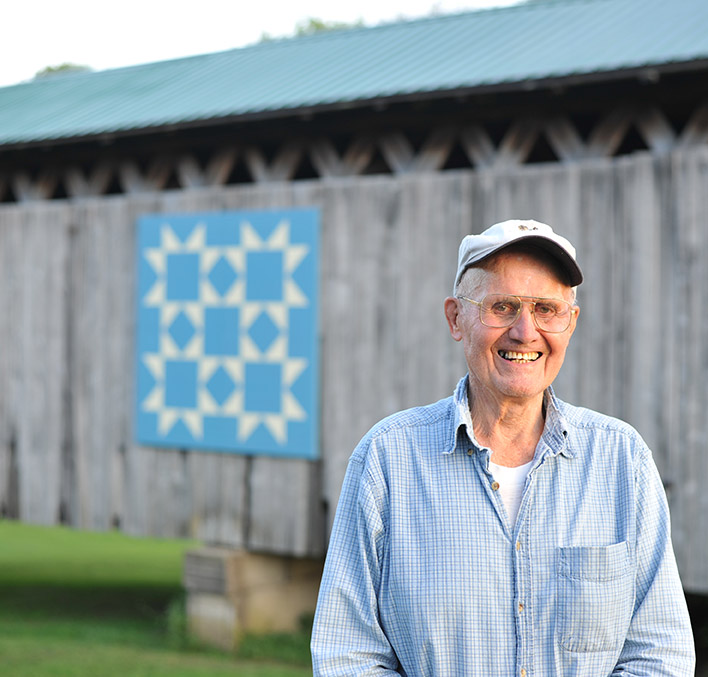Here is an excellent, short history of the barn quilt concept, as related by Donna Sue Groves in an interview and posted on the Quilt Alliance blog. The Appalachian roots are interesting. Many of Ashtabula County’s residents trace their families back to Appalachia and the great migration that occurred from the Southern Highlands to northern cities in the 1940 and 1950s. Further, Ashtabula County is part of the Appalachian Regional Commission; essentially, in economic terms, we are Appalachian, according to Congress. We have many reasons to have a barn quilt trail here …
“The quilt barn project is a project, or it was an idea, a concept, that probably was birthed about the same time that I watched my grandmother’s quilt and when we would go visit them in the Roane County, West Virginia. During road trips with Mother and Dad, my mother created a car game to keep my brother and I quiet. Since we grew up in West Virginia you can’t play the typical license plate car game when you’re traveling on the back roads of West Virginia, because all you saw was West Virginia license plates. So Mother created a car game and we counted barns. If it was a certain kind of barn, you got two points; if it was another kind of barn, you got three points; if it had outdoor advertising on it, you got a bonus of ten points if you could read it. Barns like “Chew Mail Pouch” or “See Rock City” or “RC Cola,” all kinds of outdoor advertisements. Red barns were higher points. The game led to discussions and questions about the barns, “Were they an English barn, were they Welsh, German and what the purpose of the barns was?” It became a history and cultural opportunity for my mother to engage my brother and I, and my father too, in conversational teaching moments, whether I knew it or not, and they were exciting. I looked forward to seeing barns. And then as a teenager, we traveled through Pennsylvania, where I was first introduced to the German, Pennsylvania Dutch barns with their hex signs which had the most colorful, wonderful, geometric designs on them, and they were worth fifty points in our car game and that was pretty exciting.
So, as you can see, I was imprinted with the love of barns, as I said, and then imprinted early with quilting and the designs. Both were a major part of my childhood and represented my culture and heritage and my love of home and family. In 1968 we moved away from West Virginia, and moved to the flatland of Ohio, and then eventually the path took my mother and me to southern Ohio, to Adams County where we bought a farm that had a barn on it. So, I finally had a barn that actually belonged to us. One day as mother and I stood looking at our barn in 1989, it was a tobacco barn, and I, not knowing that people actually grew tobacco and dried it in barns was surprised to see how it differed from the barns of my childhood. I didn’t understand about tobacco barns because we didn’t see those in West Virginia or in our travels. I said to Mother, ‘This is the ugliest looking barn I’ve ever seen in my life! It needs some color, and I think I’ll paint you a quilt square on it someday.’ Well, that promise or that outburst became a continuous promise from 1989 through the years, until the year 2000. Friends of mine, Pete Whan with the Nature Conservancy and Elaine Collins, the Economic Development Director in Adams County approached me and said, ‘Donna, your mom’s getting older, and that’s really a great idea, you wanting to create a quilt square for her and paint it on the barn. Pete and I will volunteer to help you.’ And I said, ‘Great. I think that if we’re going to do one, we should consider doing a bunch of quilt squares, because I think we can create a driving trail and people will come to Adams County to drive a trail, to see our barns with quilt squares on them, and ultimately that will create economic opportunity. Our quilters can sell wall hangings and quilts based on these quilt squares, and our artists and photographers can make note cards, and we can have t-shirts, and our potters will make coffee mugs, and we can raise money which will help everybody locally.’ And they said, ‘Oh, how can we do that?’ And I said, ‘Well, we need to form a committee and create a plan of action.’
So we did, and our first committee meeting was in January of 2001, in Adams County. My mother was part of that committee. Several business owners, a couple of barn owners, someone from the Chamber of Commerce and the Travel and Tourism Bureau, there were about ten, twelve of us, sat down together and created this model on how we would create a driving trail. Our goal was to hang or to paint three quilt squares on barns in 2001. We applied to the Ohio Arts Council and received funding for our first three quilt squares, and someone on our committee, Judy Lewis who owns Lewis Mountain Herb Farm, volunteered that she wanted to have the first quilt square and she wanted it dedicated at her festival in October 2001. We all agreed that that would be fine. Mother had researched traditional old quilt square patterns, we tried to be very conscientious about copyright with the concern that we did not infringe on artists or designers of any quilt patterns. So Mother came up with about thirty-five squares, and we voted on twenty, the committee, that we wanted to do. The reason we chose twenty quilt squares to develop a quilt trail, a driving loop, was because mother said that twenty quilt squares make up an average size bed quilt. We felt that the trail needed a beginning or it might go on forever.
So the end of the beginning of the story, or the end of that story for the moment, is we hung our first quilt square October 2001, at the Lewis Mountain Herb Fair, with an attendance of about 10,000 to 15,000 people. Then the story was out. The press picked it up. An adjoining county, Brown County, Ohio, called and said, ‘We love it. How do we do it?’ Tennessee read an article in a local magazine. They called and wanted to know how to do the project. Iowa wanted to duplicate the project. I spoke at a conference in Nebraska. Pat Gorman from Iowa was there and heard me talk about the trail. When I got back home, Pat called me and said, ‘Donna Sue, Grundy County may not have all of the bridges as Madison County but we have the barns. How do we do the project?’ So Pat and I collaborated. I went out two or three different times to work with Grundy County and help them to get a good start. And the rest is history. Now we’re up to about twenty-two states, and twenty counties in Ohio. I’m very proud.
Want to learn more about Donna Sue Groves and barn quilt trails? Check out the trailer for the documentary Pieced Together, to be released in 2015. You can read more quilt stories on the Quilters’ S.O.S.- Save Our Stories page on the Quilt Alliance website.


